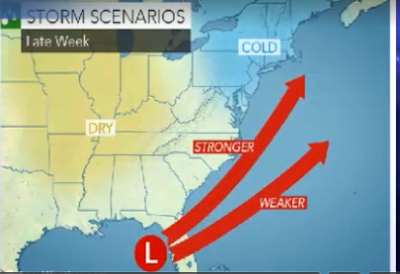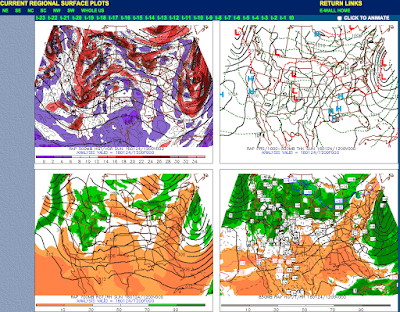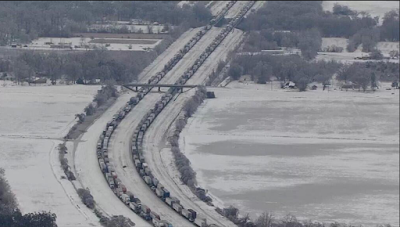Well, geneticists are people, too, with all the vanities that accompany that distinction. They want to name their genes and show their insight. That's why we have names like 'BRCA' for the 'breast cancer' genes, and countless other examples. In fact, BRCA1 is, on current best understanding, a general-use, widely expressed gene whose coded protein is used to detect certain types of DNA mutations in the cell, mismatches (non-complementarity) between opposite nucleotides at the corresponding location on the two strands of the DNA molecule) and help fix them. It is not the, or even a, gene 'for' breast cancer! It received its name because mutations in the gene were discovered being transmitted among victims of breast cancer in large families. Once identified, risk associated with the gene could be documented without needed to track it in families. Proper gene-naming should describe the chromosomal location or normal function, where known of a gene, not why or how it was discovered, and not suggesting that its purpose is to cause disease. Even the discovery-based labeling is risky because genes often if not typically serve multiple functions.
Humorous names like 'sonic hedgehog' are not informative but at least not misleading. One interesting example concerns the 'olfactory receptor' or OR genes. These genes code for a set of cell-surface receptor proteins, part of a larger family of such genes, that were found in the olfactory (odor-detecting) tissues, such as the lining of the nose in vertebrates like mice and humans. There is a huge family of such genes, about 1000 in mammals, that have arisen of the eons by gene duplication (and deletion) events. Our genomes have isolated OR genes and also many clusters, of a few or up to hundreds of adjacent OR genes. These arose by gene duplication events (and some were lost by inaccurate DNA copying that chopped off parts of the gene), so the number of active and inactive current and former OR genes are included, varying somewhat in each of our genomes.
Big arrays of genes like these often are inaccurately duplicated when cells divide, including during the formation of sperm and egg cells. The inaccuracy includes mutations that affect the coded OR protein of a given OR gene and hence among the many different OR genes. This process, over the millennia, generates the huge number and variety of gene family members, of which the OR family is the largest. In the case of ORs, the idea has been that, like the immune system, these genes enable us to discriminate among odors--a vital function for survival, finding mates, detecting enemies, and so on. Because of their high level of sequence diversity, each OR gene's coded protein responds to (can detect) a different set of molecules that might pass through the airways. This allows us to detect--and remember--specific odors, because the combination of responding ORs is unique to each odor. Discovery of this clever way by which Nature allows us to discriminate what's in our environment was worthy of a Nobel prize to Richard Axle and Linda Buck in 2004.
The catch is that this only works because each nasal olfactory cell expresses only a single OR gene. How the others are shut off in that cell, but each of them is turned on in other olfactory cells is interesting, but not really understood. At least, this elaborate system evolved for olfactory discrimination....didn't it? After all, the genes are named for that!
Well, not so fast. A recent paper by Flegel at el. in Frontiers in Molecular Biosciences, has looked for OR expression in individual mammal sperm cells. It has concluded that these genes, on the surface of sperm cells, enable it to find and fertilize eggs. As described by the authors, sperm cells locate egg cells in the female reproductive tract by various chemosensory/receptor means, in a process not fully understood. Various studies have found OR genes expressed on the surface of sperm cells, where they have been said to be involved in the movement mechanisms of sperm. These authors checked all known OR genes for expression in human sperm cells (they looked for their RNA transcripts). 91 OR genes were detected as being expressed in this way. They showed their presence in various sub-cellular compartments in the sperm cells, which may be suggestive of specific functions.
Interestingly, the authors claim they've been leaders in detecting 'ectopically' expressed OR gene transcripts (but they aren't the only people documenting such 'ectopic' expression; see this post from 2012). Whether this is just transcriptional noise or really functional, the very term 'ectopic' suggests the problem with gene naming. If they're in sperm cells, they aren't properly named as 'olfactory' receptors. These authors detected varying numbers of OR genes in different samples. Some of this can be experimental error, but if it is highly controlled variable expression, serious questions arise. Many of the transcripts were from the antisense (opposite) DNA strand to the one that actually codes for a protein sequence.
The authors found some systematic locations of specific OR genes in the sperm cells, as shown here:
 |
| Localization in sperm of specific Olfactory Receptor genes. Source: Flegel et al., see text. |
The plausibility of these results is quite strange. It is no surprise whatever to find that genes are used in multiple contexts. But in this particular case, repeatable findings could mean sloppy transcription, so that actually important genes are near the OR genes and the latter are just transcribed and/or translated with out real function. Of course, the authors suggest there must be some function because, essentially, of the apparent orderliness of the findings. Yet this is very hard to understand.
OR genes vary presumably because each variant responds to differing odorant molecules. With a repertoire of hundreds of genes, and only one expressed per olfactory neuron, we can distinguish, and remember, odors we have experienced. For similar reasons, the genes are highly mutable--again, that keeps the detectability repertoire up. Your brain needs to recognize which receptor cells a given odor triggers, in case of future exposure. But the combination of reporting cells, that is, their specific ORs, shouldn't generally matter so long as the brain remembers.
That eggy aroma!
There is a huge burden of proof here. Again it is not the multiple expression, but the suggested functions, that seem strange. If the findings actually have to do with fertilization, what is the role of this apparently random binding-specificity, the basic purportedly olfactory repertoire strategy, of these genes on the sperm cells' surface? How can a female present molecules that are specifically recognized by this highly individualistic OR repertoire in the male? How can her egg cell or genital tract or whatever, present detectable molecules for the sperm to recognize? What is it that guides or attracts them, whose specificity is retained even though the OR genes themselves are so highly variable?
And of course one has to be exceedingly skeptical about antisense OR-specific RNAs having any function, if that is what is proposed. It is more than hard to imagine what that might be, how it would work, or most importantly, how it would have evolved. Is this a report of really striking new genetic mechanisms and evolution....or findings not yet clear between function and noise?
The mechanism is totally unclear at present, and the burden of proof a major one. Given that others have reported that OR genes are expressed in other cells, the evidence suggests that such expression is clearly believable, whatever the reason. Indeed, years ago it was speculated that they might serve to identify body cells with unique OR-based 'zip codes' for various internal use as we recognize which cell is in which tissue and the like.
Sperm- and/or testis-specific expression of at least some OR genes has also been observed before, as these authors note, but with less extensive characterization. Is it functional, or just sloppy genome usage? Time will tell. The sperm cells are programmed to know the delicious smell of freshly prepared eggs. Now, perhaps the next check should be to see whether the same sperm cells are also looking for (or lured by) the aroma of freshly fried bacon!
But if it is another use of a specific cell-identification system, of which olfactory discrimination is but one use, then it will be consistent with the well-known opportunistic nature of evolution. There are countless precedents. How this one evolved will be interesting to know and, perhaps especially, to learn whether olfaction was its initial use, or one adopted after some earlier--perhaps fertilization-related--function had already evolved.
But for our purposes today, the clear lesson, at least, should be the problem of coining gene names inaptly assigned because of their first-discovered function (or, in our view, because some whimsical geneticist liked a particular movie or cartoon character, like Sonic Hedghog).











